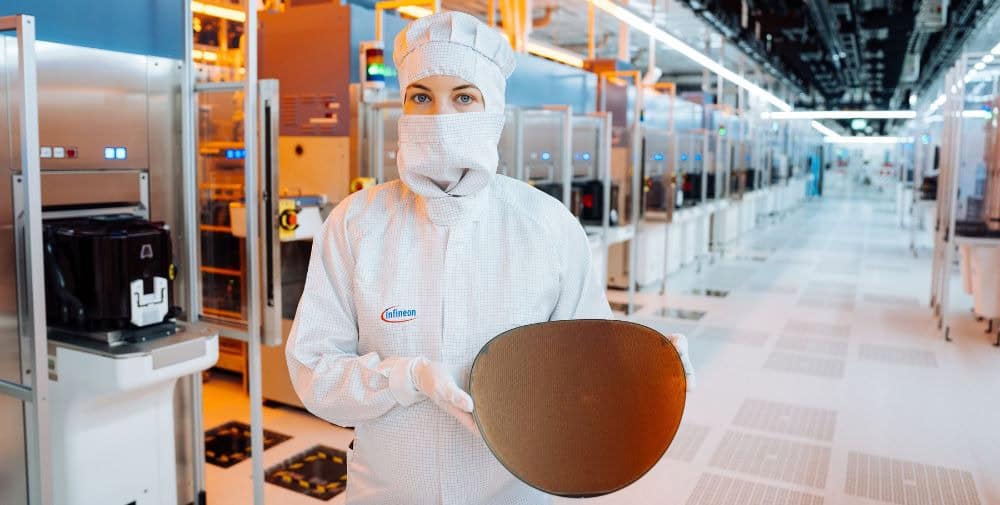Strengthening Swiss research collaboration in the field of IC design and microelectronics
The SwissChips initiative is a joint project of CSEM, EPFL and ETH Zurich, supported by various Swiss and European research institutions, semiconductor associations and industrial partners. This initiative is supported by the Swiss State Secretariat for Education, Research and Innovation (SERI). Modeled on the US and European Chips Acts, this act aims to strengthen the Swiss semiconductor sector by promoting cutting-edge research in the field of integrated circuit (IC) design. The initiative covers a wide range of areas, such as: Computing System on Chips (SoCs), 6G Communications, Space Electronics and Photonics, SoCs for Autonomous IoT Devices, Chips for EDGE AI, Biomedical Circuits and Systems, and Devices and Sensors.
ETH Zurich is coordinating the program, with all three founding institutions taking a leading role in their respective research areas. These efforts are aimed at strengthening research, innovation, development and business in the field of microelectronics and IC design and ensuring that Swiss universities have access to state-of-the-art manufacturing and design technologies. In addition, the initiative aims to foster the Swiss semiconductor, microelectronics and IC design ecosystem and develop robust synergies between research institutions.
Strengthening the semiconductor sector in Switzerland
The program involves PhD students and postdocs, as well as existing engineering and research staff at participating institutions, who will push the boundaries of IC design. This concerted effort will not only strengthen Switzerland’s influence in the semiconductor industry in the post global chip shortage era (2020-2023), but also ensure the development of infrastructures and technologies that benefit all scientific fields. This includes making progress accessible to Swiss universities and universities of applied sciences, thereby promoting holistic growth in the fields of semiconductors, microelectronics and IC design.
The program is a transitional measure that will run from 2024 to 2026 and has a total budget of CHF 33.8 million. Of this, CHF 26 million comes from SERI and the remaining CHF 7.8 million from the joint efforts of CSEM, EPFL and ETH Zurich. With this investment, the SwissChips initiative aims to secure Switzerland’s role in the semiconductor industry and ensure a lasting impact on research, innovation and industry collaboration within the country’s thriving semiconductor and microelectronics ecosystem.
Alain-Serge Porret, Vice President and Head of the Integrated and Wireless Systems Department at CSEM, explains the latest breakthrough in Swiss chip technology
What challenges do you see in achieving the goals of the new SwissChips initiative?
The challenge is typical for CSEM: to guide researchers and help them achieve results that are not only novel but also applicable to the problems of our partners in Swiss industry. We complement existing capabilities and maximize the impact of the investment as measured by successful technology transfer to local industry.
And as for the opportunities?
There are many: First, we can develop great technologies that are useful to the economy and help companies that are in this field or need powerful electronic devices to succeed. An entire ecosystem depends on this, not just the companies that develop chips. SwissChips will help them maintain leadership in areas where Switzerland is already strong, such as ultra-low power, autonomous devices for the IoT, sensor technology, medicine or communication. Secondly, the initiative will further deepen the collaboration with ETHZ and EPFL and provide additional opportunities to exchange and combine our respective research. Finally, it offers the chance to collaborate with and benefit from more advanced manufacturing facilities in Europe.
How does the initiative address concerns about weaknesses in the semiconductor supply chain and ensure Switzerland has a competitive advantage in the global marketplace?
Switzerland is not in the business of cutting-edge chip manufacturing, which would require gigantic facilities and billions of dollars of investment. However, we do have specialized factories and some leading suppliers of innovative chips, such as EM Microelectronics for ultra-low power, Sensirion for sensors or Semtech and u-blox for communication. We are also home to world-leading companies that require specialized chips for high-volume applications such as mice or hearing aids. And finally, there are local manufacturing companies around the chips – think specialized electronics assembly – with companies like Valtronic, Hybrid or Miromico. We need to protect this unique expertise to stay relevant on the world stage.
Can you elaborate on the strategic partnerships and collaborations that the initiative is aiming for?
The initiative is primarily aimed at fostering research to sow the seeds for a new generation of specialists who will develop ideas for the future and turn these ideas into products. This will happen at the end of the program when these experts join existing companies, benefit from our technology transfer process or found new start-ups.
Local production partners will be contacted directly to help develop proof-of-concepts and solve difficult production problems.
What significance does the initiative have for environmental sustainability in chip design, manufacturing processes and the entire life cycle of semiconductor products?
Sustainable electronics is a complex topic and a growing concern in the tech industry. At CSEM, SwissChips will go hand in hand with another related initiative and complement our efforts on solar cells and batteries of the future.
We believe that integrated circuits can pave the way to a more sustainable world. They enable the development of new types of ubiquitous devices that can provide more accurate information about our world and our use of resources, with the goal of eliminating waste.
Standard chips are made almost exclusively from very pure silicon or sand, which makes them quite inert and non-polluting. However, their production leaves a footprint that must be included in the life cycle assessment of the products built around them. Nevertheless, we believe that tiny, optimized chips with a high degree of integration are a way to reduce the number of components, the size of the device and its housing. Even if the chip is shrunk, the substrate it sits on is no longer environmentally friendly: our options are therefore to use new substrates, interconnects and packaging materials for chips, or even to use biodegradable materials.
We also believe that our unique expertise in ultra-low power devices enables drastically smaller batteries, based on more environmentally friendly but less efficient chemical processes. Ultimately, in some applications, we can do away with the battery altogether and use power harvesting techniques enabled by greater integration and better chip design.
What is the potential impact of this initiative on the Swiss economy, both in terms of job creation and long-term economic growth?
According to an estimate by Swissmem, around 15,000 specialists are directly linked to the semiconductor industry, 70,000 produce electronic subsystems that depend on these chips, and around 300,000 jobs are affected by the need for high-performance electronic devices.
The initiative is intended to help maintain and extend Switzerland’s lead in certain pioneering applications, from consumer to industrial and medical products. There is no direct help for industry: but by strengthening the base of the employment pyramid mentioned above, we are confident that this innovation push will help motivate companies to invest in Switzerland rather than moving their operations closer to the large planned investments in Grenoble, Munich or Cambridge.
– – – – – –
Further links
👉 www.csem.ch
Photo: pixabay



